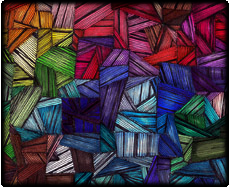State of Decay review: not just another zombie game, but the zombie game
 Marc Kusnierz |
Marc Kusnierz |  Monday, July 1, 2013 at 10:22AM
Monday, July 1, 2013 at 10:22AM  State of Decay is an open-world zombie survival game that snuck up on me, bit me and immediately turned me into a fan. I remember when State of Decay was first announced a few years ago--then, it was called Class 3--and thought it looked interesting, but news of it seemed to disappear fast until only a few months ago when it was readying itself for release; it may have been that other news overshadowed State of Decay, but not hearing about it over and over again for years made playing it such a delightful surprise.
State of Decay is an open-world zombie survival game that snuck up on me, bit me and immediately turned me into a fan. I remember when State of Decay was first announced a few years ago--then, it was called Class 3--and thought it looked interesting, but news of it seemed to disappear fast until only a few months ago when it was readying itself for release; it may have been that other news overshadowed State of Decay, but not hearing about it over and over again for years made playing it such a delightful surprise.
So what is State of Decay? Well, as previously stated, it is an open-world zombie survival game and, from just that description, it is easy to think, "Oh great! Another zombie game...," but thinking that, and not playing the game because of that, would be a mistake; State of Decay is a zombie game, but, in a way, it is the zombie game. When I think of all the zombie games I've played and the one I always wished I was playing, State of Decay is the closest game to the one I always wished for; that is because State of Decay captures the feeling of actually being in a zombie apocalypse more so than any other zombie game I've ever played; everything matters in the game, and every action has a consequence, no matter how large or small.
 This may come as a surprise, but this game is not for kids.
This may come as a surprise, but this game is not for kids.
The game starts off right in the middle of a bit of action, as you--playing as the character Marcus--and your buddy are fending off some zombies; it's nice starting the game in the middle of some action because it prepares you for what the game will throw at you throughout its entirety: a constant state of tension. It is this tension that makes State of Decay one of the scariest games I've ever played --you always have to be on guard because anything could happen and characters you've known for hours could be gone within seconds if you're not prepared. Earlier, I said, you start playing as the character, Marcus, but, once the game settles down and the tutorial-in-disguise is over, almost anyone can die, including Marcus. This sense of mortality, knowing that almost no character is safe--a small few NPC are safe--adds weight to every choice; "Should I go check out this one place for supplies? My character is tired and his weapon is about to break; should I risk it?" This is one of many questions you'll have to ask yourself when playing State of Decay.
One of the reasons the individual lives of characters are so important is because each character levels up individually and, losing a character you've leveled up for hours and hours is, in a way, depressing, and, watching them get ripped apart by a pack of zombies made me feel like a failure--when a character died, I felt at fault because I believed I pushed them too hard--and making me feel such a thing is not something I'm used to in games. There is a story in State of Decay, but it is the story you create, the relationships you create, that makes the game and what happens within it so powerful.
 When a character dies, they die forever. And ever...and often in two pieces.
When a character dies, they die forever. And ever...and often in two pieces.
The game itself, on a base level, is pretty straightforward; you can use melee or ranged weapons--guns obviously draw much more attention than melee weapons--and you will be using either type of weapon to kill many, many zombies (or you can just run them over with a car), but there is so much more going on besides zombie killing and, for some, it may be too much; in addition to zombie killing, there is base building, community management, resource gathering and, like many mobile games, time becomes a factor.
When building a new structure within a base, or asking for help in finding a specific resource, there is a specific amount of time it will take to complete and said time is real-time; if building a structure will take 30 minutes, it will take 30 minutes of real-time, not in-game time. I know it may sound annoying, but I found it added to the tension and realism of the game and it also didn't bother me as much because I played the game in short doses everyday--like Animal Crossing--and would recommend playing the game in that way for the best experience; playing State of Decay for extended periods of time not only tired the in-game characters, but me as well because the constant tension was exhausting.
As positive as I am on the game, it is not perfect and is quite buggy; zombies will, at times, be halfway in the ground; the physics can get real wonky; the framerate will drop when a lot of shit is going down on-screen; all that said, every bug encountered never took away from the overall experience and never added an extra layer of frustration; however, do keep this in mind if you're someone who finds bugs problematic. And no, I don't mean, "Ew, look at that creepy, crawly thing!" type of bugs.
State of Decay is one of my favorite games of 2013, if not my favorite, and I think it's best to go into the game knowing as little as possible; the game is an experience, one that is unique to each player but also shared by every single one at the same time. I know the $20 price tag may look scary--potentially the scariest thing about the game to some--but State of Decay packs more content within its downloadable frame than many $60 retail games and, after already putting almost two dozen hours into the game, I still want to go back for more.
*State of Decay is available now on Xbox LIVE Arcade for 1600 MS points.
State of Decay (XBLA)










Reader Comments